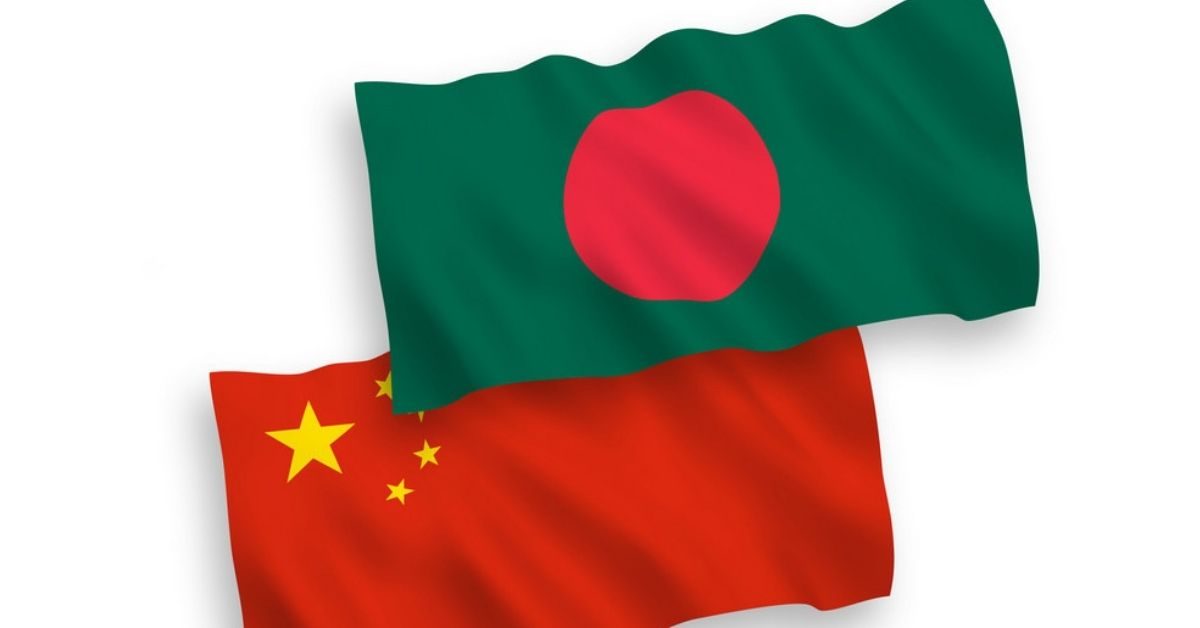Bangladesh is the second highest investment destination for China in South Asia. Referring to the incident of Sri Lanka, lease of Hambantota port by China, critics say that greater dependency of Bangladesh on China will make the country a victim of Chinese debt-trap. Is Bangladesh really going to be a victim of China’s debt-trap?
Bangladesh reached lower-middle-income country status in 2015. Bangladesh has met, for the second time, all the three criteria for graduating from the Least Developed Country (LDC) and if everything goes right, will finally be graduated in 2026.
Sri Lanka became middle income country in 1997. The country is facing economic downturn due to wrong economic policies. Recently, Bangladesh has agreed to lend $200 million to debt-ridden Sri Lanka which is struggling to maintain a moderate foreign exchange reserve. Undoubtedly, it is matter of pride for Bangladesh. At the same time, Bangladesh should take lessons from Sri Lanka for upcoming days to avoid unexpected economic crisis.
Bangladesh and Sri Lanka have similar economic weak point. In both countries, the Tax-GDP ratio is not at expected percentage. The economy of both countries depends on a single product, for example- Bangladesh’s economy is dependent on RMG and Sri Lankan economy is dependent on tourism industry. The good news for Bangladesh is that, though Sri Lanka is struggling with its economy but Bangladesh has enough time to confront the upcoming challenges.
The benefits, such as lowest interest rate; longer grace period, that Bangladesh receives as a LDC from different donor organizations like World Bank (WB), International Monetary Fund (IMF), Japan International Cooperation Agency (JICA) etc. will be available till 2027. Now donor agencies like WB, IMF etc. lend Bangladesh with 2% interest rate. These loans have very long tenure, 25-40 years, and the grace period is almost 10-12 years. After 2027, Bangladesh will have to pay higher interest rate.
As Sri Lanka is a middle-income country, it has to pay higher interest rate and gets lower grace period for the loan from donor agencies. Besides, Sri Lanka also borrows from international market through bonds with almost 6 percent interest rate. According to the Central Bank of Sri Lanka, the loan borrowed by Sri Lanka through Sovereign bond was almost 50% of its total external debt.
There are sharp differences between the loans from Donor agencies and loans through Sovereign bonds. Donor agencies offer loans with low interest rates and long tenure. They also come with flexible terms and conditions such as grace periods of around 10-12 years. When the grace period matures, the repayment takes place for next 30-40 years. On the other hand, loans through bonds come with high interest rates, short tenure and no grace periods. Generally, these loans have to be paid within 10 years and the interests are also payable from day one.
Bangladesh needs precise plans for its graduation journey from LDC to Developing country. Plans are also crucial for post-graduation phase for proper implementation of development projects. Otherwise, Bangladesh may also have to face economic crisis like Sri Lanka in near future.
There is a common misconception that Bangladesh is burdened with foreign loans. But the reality begs to differ. According to Economic Relations Department’s (ERD) ‘Flow of External Resources into Bangladesh’ report, in 2019-20 fiscal years, total external debt outstanding of Bangladesh was USD 4409.51 Crore which is equal to BDT 3,74,898.35 crore in local currency. According to this figure, the per capita loan is BDT 23,425 considering the total population as 16 crores.
According to IMF and World Bank’s Standard, it is only dangerous for an economy if its external debts exceed 40% of GDP. Currently, Bangladesh’s total external debts is less than 15% of GDP which is far from danger mark. Interestingly, USA has the world’s largest external debt which is almost 102% of its GDP. However, the country’s economy is still vibrant because of the strength of US dollar.
There is propaganda against Bangladesh that, it is burdened with Chinese soft loans and soon the consequences will be like Sri Lanka. External debts are mostly used in Bangladesh to cover the budget shortage. In current fiscal year, Bangladesh has taken 38% from World Bank, 24.5% from Asian Development Bank, 17% from Japan, 3% from China and 1% from India as external debt. Bangladesh has taken 80% of total external debt from WB, ADB and JICA.
In 2016, Bangladesh and China transformed their bilateral relations to ‘Strategic Partnership’. In the recent time, like other parts of Asia, Chinese funding is also rising rapidly in South Asia. This has created a good opportunity for fast growing economies like Bangladesh as Chinese Development Finances (DFIs) are offering alternative sources of loans. Chinese DFIs are also creating a competitive and sustainable alternative funding source for Bangladesh since now other countries like India and Japan are also focusing on providing flexible conditions while financing Bangladesh. Based on the analysis, it can be concluded that the propaganda that Bangladesh is going to fall in the Chinese debt-trap is nothing but a myth.
Source : Eurasia Review








